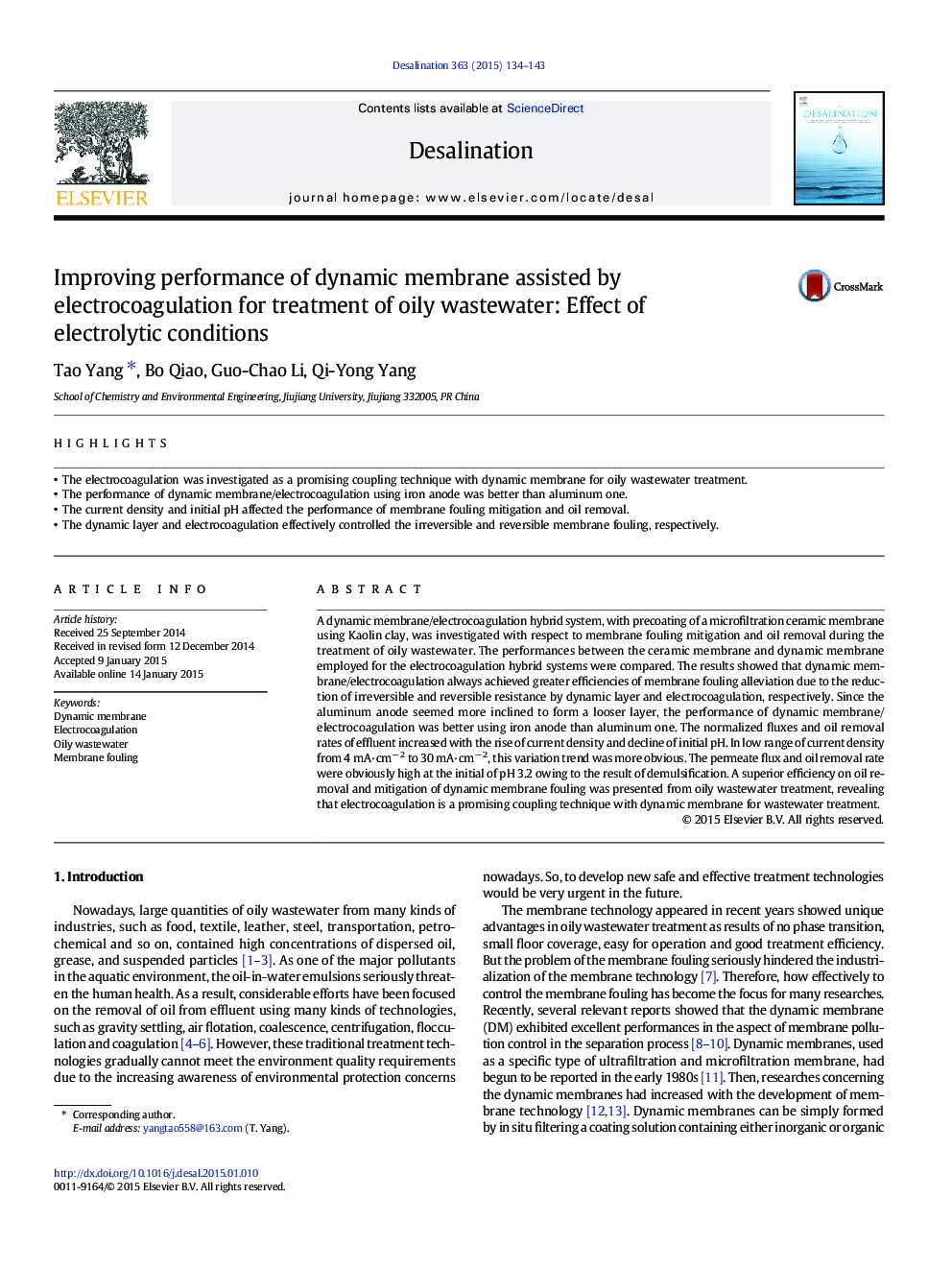| Article ID | Journal | Published Year | Pages | File Type |
|---|---|---|---|---|
| 623126 | Desalination | 2015 | 10 Pages |
•The electrocoagulation was investigated as a promising coupling technique with dynamic membrane for oily wastewater treatment.•The performance of dynamic membrane/electrocoagulation using iron anode was better than aluminum one.•The current density and initial pH affected the performance of membrane fouling mitigation and oil removal.•The dynamic layer and electrocoagulation effectively controlled the irreversible and reversible membrane fouling, respectively.
A dynamic membrane/electrocoagulation hybrid system, with precoating of a microfiltration ceramic membrane using Kaolin clay, was investigated with respect to membrane fouling mitigation and oil removal during the treatment of oily wastewater. The performances between the ceramic membrane and dynamic membrane employed for the electrocoagulation hybrid systems were compared. The results showed that dynamic membrane/electrocoagulation always achieved greater efficiencies of membrane fouling alleviation due to the reduction of irreversible and reversible resistance by dynamic layer and electrocoagulation, respectively. Since the aluminum anode seemed more inclined to form a looser layer, the performance of dynamic membrane/electrocoagulation was better using iron anode than aluminum one. The normalized fluxes and oil removal rates of effluent increased with the rise of current density and decline of initial pH. In low range of current density from 4 mA·cm− 2 to 30 mA·cm− 2, this variation trend was more obvious. The permeate flux and oil removal rate were obviously high at the initial of pH 3.2 owing to the result of demulsification. A superior efficiency on oil removal and mitigation of dynamic membrane fouling was presented from oily wastewater treatment, revealing that electrocoagulation is a promising coupling technique with dynamic membrane for wastewater treatment.
